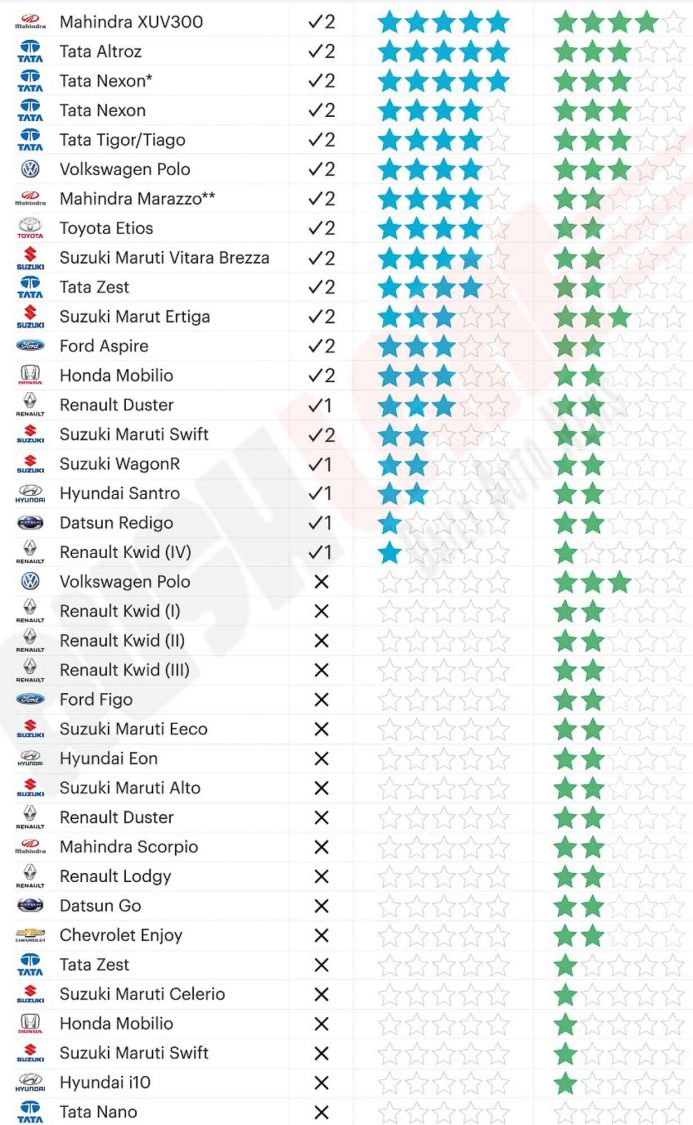Safety is gradually becoming a priority in Indian cars rather than being an added luxury
Up until a few years ago, safety was sadly not a major influencing factor for most Indian car buyers. The fact that even today, some find the very basic seatbelt too restrictive to wear is a clear testimony to the same. It is not news that Indian cars were majorly known for their value of money and unparalleled fuel economy (“Kitna Deti Hai?”).
Thankfully, things have been improving in the past few years. Credit goes to multiple stakeholders; customers to begin with (became more aware), OEMs (decided to bring in safer products), Indian Government (took steps to mandate basic automotive safety requirements), activists (was vocal about the need for safer cars) and the testing agency, GNCAP or Global NCAP (New Car Assessment Programme). The organisation has tested several Indian cars under its #SaferCarsForIndia campaign.
Indian Cars’ Road – 0 To 5 Stars
When GNCAP started testing Indian cars back in 2014, safety ratings mostly stood between a disappointing zero and two stars. Over the years, automakers operating in India took up the challenge of designing and manufacturing safer vehicles for their loyal customers. Brands such as Mahindra and Tata Motors have done a commendable job in this regard. In fact, the pre-facelift Tata Nexon was the very first made-in-India product to score five stars in Global NCAP.
After having tested over thirty models, three and four stars are much more common; a huge contrast to our first results when almost every car scored zero stars. We’re proud to have contributed to this dramatic improvement in vehicle safety standards in India. #SaferCarsForIndia pic.twitter.com/RKyYTMy0pe
— GlobalNCAP (@GlobalNCAP) July 20, 2020
The Tata Nexon’s direct rival, Mahindra XUV300 is currently the safest car in the country. It has a 5-star GNCAP rating for Adult Occupant Protection and a 4-star rating for Child Occupant Protection. Overall, it is the highest combined safety rating any car has received under Global NCAP’s #SaferCarsForIndia campaign.
Tata Motors has the strongest portfolio of safe offerings (products with at least a 4-star NCAP rating). This includes the Nexon, Altroz, Tigor, Zest (discontinued) and Tiago while Mahindra has two examples: XUV300 and Marazzo. Other notable names include the Volkswagen Polo, Toyota Yaris, New Honda City, etc.
Safety As A Priority
#SaferCarsForIndia campaign has been successful in its basic goal. Over the years, safety has become an important point of consideration for many (if not all) customers. Even OEMs have started to leverage good NCAP ratings to attract potential customers. This is evident from the increasing number of online discussions and debates on the safety standards offered by Indian cars.

While there has been consistent progress, we are still far from reaching the global safety standards for four-wheelers. The general awareness of automotive safety has improved but stricter government norms can aid substantially.

